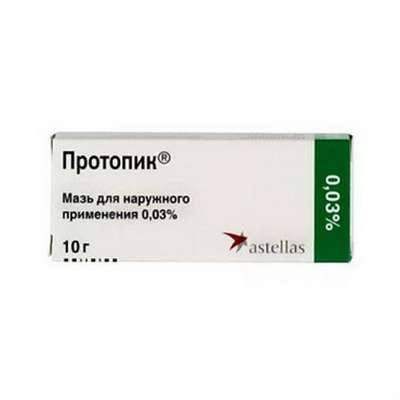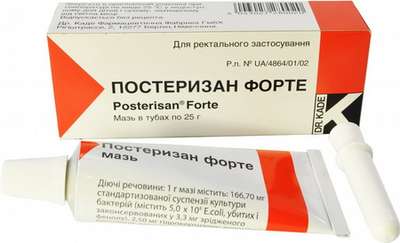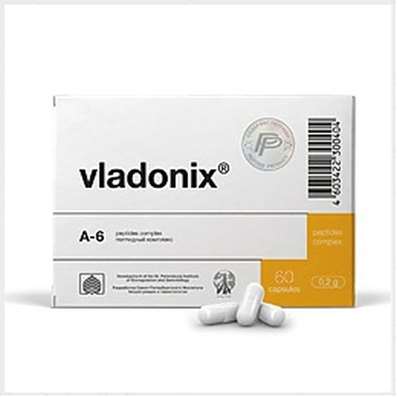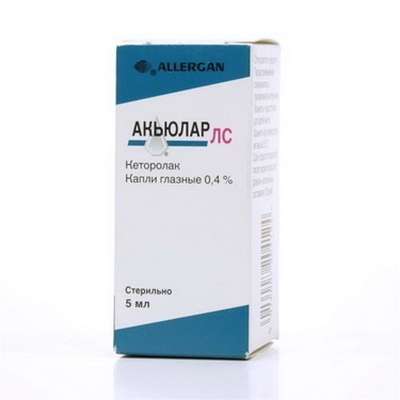Anafranil (Clomipramine)
11 Jan 2017
Pharmacological group: Tricyclic antidepressants (TCAs)
Systematic (IUPAC) name 3 - (3 -hlor- 10,11-dihydro-5H-dibenzo [B, F] azepin-5-yl) -N, N-dimethylpropan-1-amine
Trade names Anafranil
Legal status: available only by prescription
Application: orally, intravenously
Bioavailability 50%
Protein binding is 97-98%
Metabolism: liver (CYP2D6-mediated)
The half-life of 32 hours (69 hours for the active metabolite)
Isolation: the kidney (60%) and faeces (32%)
Formula C19H23ClN2
Mol. weight 314.9 g / mol
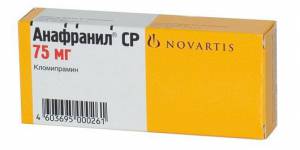
Clomipramine (Anafranil brand like) - it is a tricyclic antidepressant (TCA). It was developed in the early 1960s, the Swiss pharmaceutical company Geigy (now known as Novartis) and is still used in clinical practice worldwide. The substance is a 3-chlorinated derivative of the earlier tricyclic compound, imipramine.
Medical use
Clomipramine has several applications in medicine. It is used in the treatment of the following diseases:
Obsessive-compulsive disorder (OCD). The drug is approved by the US FDA only for the treatment of this disease. Other regulators (eg, TGA Australia and the UK MHRA) and clomipramine approved for this indication.
Major depressive disorder (MDD). In the US, the drug is often used off-label for the treatment of MDD. It is approved by the Australian TGA, and the UK MHRA for this application.
Panic disorder with or without agoraphobia. It suggests the possibility of high efficiency clomipramine compared to other antidepressants in the treatment of MDD, although at the moment adequate to substantiate this claim is not sufficient evidence.
Dysmorphic disorder;
Cataplexy associated with narcolepsy. The drug is approved by the MHRA and TGA for this application.
Premature ejaculation;
depersonalization disorder
Chronic pain in the presence of organic disease or not, in particular, tension-type headache tenzionnaya pain.
Enuresis (involuntary urination at night in sleep) in children and adolescents.
Trichotillomania.
A meta-analysis of different test drugs such as fluoxetine (Prozac), fluvoxamine (Luvox) and sertraline (Zoloft) for testing their relative effectiveness in the treatment of OCD, it was found that clomipramine is the most efficient drug.
Pregnancy and lactation
The use of clomipramine during pregnancy due to the risk of congenital heart defects in newborns. The drug can also be associated with reversible withdrawal syndrome in newborns. Clomipramine also passes into breast milk and, therefore, women who are breastfeeding should not take clomipramine.
Side effects
Very often (frequency> 10%): Breakdown of accommodation, blurred vision, nausea, dry mouth, constipation, fatigue, weight gain, increased appetite, dizziness, tremor, headache, myoclonus drowsiness, restlessness, disorders of urination, sexual dysfunction ( erectile dysfunction and decreased libido), hyperhidrosis (excessive sweating).
Common (frequency 1-10%): Weight loss, orthostatic hypotension, sinus tachycardia, clinically irrelevant ECG changes (eg, T-wave and ST- changes) in patients of normal cardiac status, palpitations, ringing in the ears, mydriasis (dilated pupils), vomiting, disorders abdominal Diarrhea Decreased appetite, Increased transaminases, increased alkaline phosphatase, muscle weakness, speech disorders, paraesthesia, muscle hypertension, dysgeusia, memory loss, muscle weakness, impaired attention, confusion, disorientation, hallucinations ( particularly in elderly patients and patients with Parkinson's disease), anxiety, agitation, sleep disturbances, mania, aggression, depersonalization, insomnia, nightmares, exacerbation of depression, delirium, galactorrhea (lactation not associated with pregnancy or breastfeeding), breast Augmentation, Yawning , tides, dermatitis (skin rash, urticaria), photosensitivity reactions, pruritus.
Abstinence symptom
Withdrawal symptoms may occur if gradual, and very often - the sudden discontinuation of tricyclic antidepressants. Possible symptoms include: nausea, vomiting, abdominal pain, diarrhea, insomnia, headache, nervousness, anxiety, dizziness and worsening of psychiatric status. Important difference between the return of the original symptoms of mental disorder and symptoms of withdrawal syndrome when canceling clomipramine. The severity withdrawal syndrome can be very serious. It can also occur in newborns, if clomipramine is used during pregnancy. The main output gear tricyclic antidepressants, believed to be associated with the opposite effect of excessive cholinergic activity due to the resulting neuroadaptation chronic inhibition of cholinergic receptors tricyclic antidepressants. New start receiving antidepressant and slow dose reduction is the method of choice for the treatment of withdrawal symptoms while taking tricyclic antidepressants. Some withdrawal symptoms can be reduced when taking anticholinergics such as atropine or benzotropin mesylate.
Interaction with other drugs
Clomipramine may interact with a number of different drugs, including monoamine oxidase inhibitors such as isocarboxazid, moclobemide, phenelzine, selegiline and tranylcypromine, antiarrhythmic drugs (because of the impact that TCAs such as clomipramine, having on cardiac conduction). It is also possible the potential pharmacokinetic interaction with quinidine in connection with the fact that clomipramine is metabolized by CYP2D6 in vivo), diuretics (due to the potential for development of hypokalemia [low levels of potassium in the blood], which increases the risk of increase in the QT interval and the effect of torsades de pointes ventricular ), selective serotonin reuptake inhibitor (SSRI; because of potential additive serotonergic effects leading to serotonin syndrome and because of a possible pharmacokinetic interaction with SSRI [e.g., fluoxetine and paroxetine], resulting in inhibited CYP2D6) and serotonergic agents such triptans like, other tricyclic antidepressants, tramadol etc. (Due to the potential for the development of serotonin syndrome). Its use is also not recommended for persons at the same time applying inhibitors of CYP2D6 because of the potential increase in plasma levels of clomipramine and as a result the potential for the development of the central nervous system and cardiac diseases.
Overdose
There is no specific antidote for an overdose of the drug and all possible treatment can only be supportive and symptomatic. Activated carbon can be used to limit absorption in the cases of oral overdose. If you suspect an overdose of clomipramine in patients should be hospitalized and kept under close supervision for at least 72 hours. It reported that clomipramine is less toxic in overdose than most other TCAs, but it may also be due to the circumstances associated with the majority of overdoses as clomipramine often used to treat such diseases in which the suicide rate is not very high, for example, obsessive-compulsive disorder. Another meta-analysis, however, it was shown that taking clomipramine associated with considerable toxicity in overdose.
Mechanism of action
Clomipramine is highly selective (~ 200 times stronger norepinephrine) reuptake inhibitor. Moreover, the drug acts as an antagonist / inverse agonist against histamine H1 receptors and muscarinic acetylcholine receptors α1-adrenergic receptors. The last three steps are likely to be associated with its negative effects.
Pharmacokinetics
Peak plasma concentrations observed after 2-6 hours (mean 4.7 hours after) after oral administration of clomipramine. The maximum concentrations of clomipramine in plasma are about 56-154 ng / ml. Stable clomipramine concentrations are about 134 -532 ng / mL (mean 218 ng / ml) and reached after 7-14 days of treatment. The stable concentrations of the active metabolite, desmethyl-clomipramine about 230-550 ng / ml. Its bioavailability is 50%. It binds approximately 97-98% of plasma proteins, mainly albumin. It is metabolized in the liver, principally by means of CYP2D6. The half-life is 32 hours, the half-life of its metabolite N- desmethyl, desmethyl-clomipramineis about 69 hours. The drug is mainly excreted in urine (60%) and the feces (32%). Its volume of distribution is approximately 17 l / kg.
Veterinary use
U.S. clomipramine currently the only licensed treatment for separation anxiety in dogs and such use is sold under the trademark Clomicalm. The drug has proven to be effective in the treatment of obsessive-compulsive disorder in cats and dogs. In dogs, the drug has also demonstrated similar efficacy of fluoxetine in the treatment of the persecution of the tail. Some evidence of the benefits of the drug in the treatment of noise phobia in dogs. Also, the effectiveness of the drug in the treatment of urinary incontinence in cats was demonstrated.

 Cart
Cart

